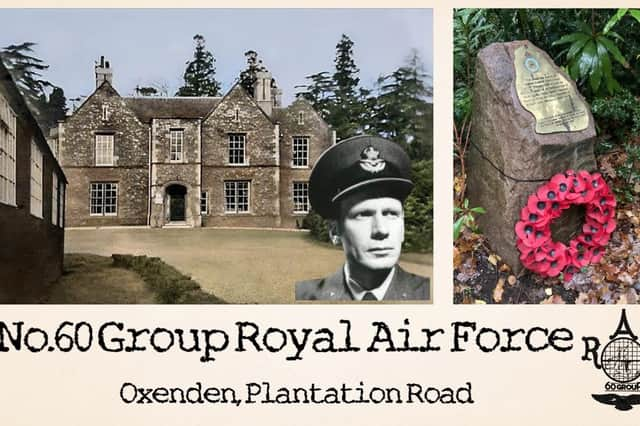Leighton Buzzard’s Wartime History - “The first thing that won the Battle of Britain was radar"


“The first thing that won the Battle of Britain was radar".
The Battle of Britain Fighter Ace, Air Commodore Peter Brothers, spoke these words about the major impact that top secret radio direction finding equipment (later named radar) had made in repelling Nazi Germany during Britain’s darkest hour. The headquarters for Britain’s secret weapon was Oxenden House in Plantation Road, Leighton Buzzard.
The original Lodge House and a faded commemoration plaque nearby are all that stands today to mark the site of Britain’s radar heroes. It was home to No.60 Group, Royal Air Force Fighter Command.
Advertisement
Hide AdAdvertisement
Hide AdThe Group was the largest organisation of its kind during the war and coordinated more than 18,000 personnel from across the UK, Commonwealth and its allied nations.
Within ‘Oxenden’ were military and civilian experts responsible for all ground radar planning, construction and operation throughout the Second World War. Their pioneering research and development optimised airborne radar for the allied bombing campaigns and their work still forms the backbone of aviation today.
The man who first brought radar to Leighton Buzzard was Group Captain Sir Edward ‘Ned’ Fennessy CBE. Ned was a nationally recognised electronics expert and pioneer of radar technology who became one of the most influential men of the Second World War.
He made a major impact on the success of the Battle of Britain, the D-Day landings and right across the allied fighter and bomber campaigns. Despite this, he remains uncommemorated in the town.
Advertisement
Hide AdAdvertisement
Hide AdNed chose Leighton Buzzard as a base, because of the nearby communication infrastructure hub at Air Ministry Central (now better known as Q Central), the excellent access to major telephone cables that connected every radar station, the quick road links to Fighter Command Headquarters in Middlesex and proximity to the Alternative Fighter Command Headquarters and Emergency Operations Room at RAF Leighton Buzzard (later renamed RAF Stanbridge).
The first location for the radar team was Carlton Lodge in Heath and Reach, but when demand for Radar grew massively and No.60 Group formed to manage it, Oxenden House was chosen. Ned reportedly lived in the town throughout the conflict.
When he died in November 2009, Ned was commemorated in many National newspapers. The Times commented, “he was in charge of Britain’s main air defence radar chain, and later in the war prepared the radar plan for the air support of the D-Day landings and the campaign in northwest Europe.” He was “a radar pioneer whose outstanding work during the Second World War was followed by a successful business career.”
Of Leighton Buzzard’s pivotal role in the Battle of Britain, Sir William Sholto Douglas, Marshal of the Royal Air Force and former Commander in Chief of Fighter Command commented “I think we can say that the Battle of Britain might never have been won… if it were not for the radar chain”.
Advertisement
Hide AdAdvertisement
Hide AdAir Chief Marshal Sir James Robb of RAF Fighter Command went further, acknowledging that the radar technology had given Britain’s air defences the edge and advising “I have no hesitation in saying that without No.60 Group and Radar, the Battle of Britain, even the war itself, could not have been won.”